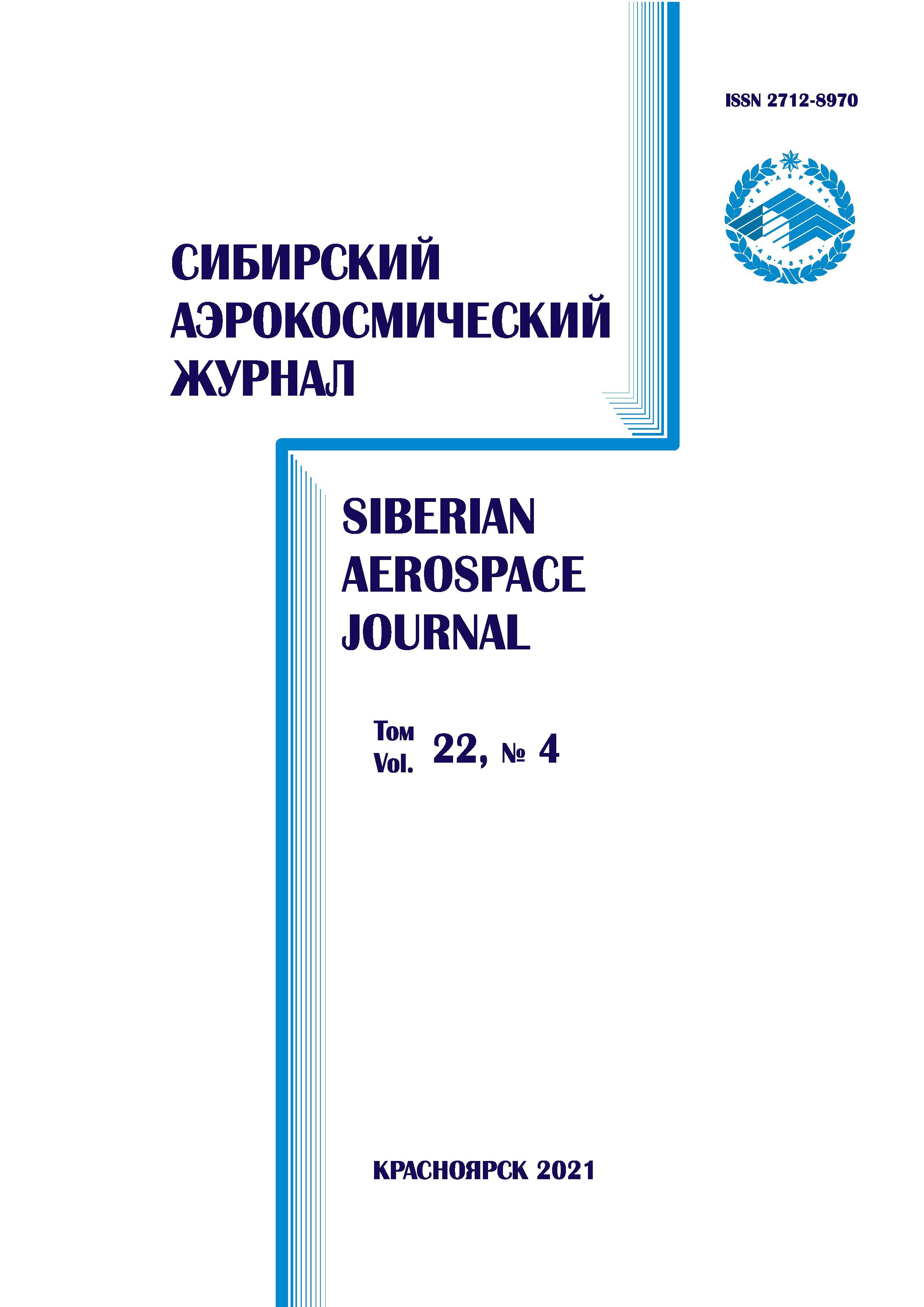On the choice of orbits for spacecraft
- Authors: Egorythev G.P.1, Shiryaeva T.A.2, Shlepkin A.K.2, Filippov K.A.2, Pashkovskaya O.V.2
-
Affiliations:
- Siberian Federal University
- Krasnoyarsk State Agrarian University
- Issue: Vol 22, No 4 (2021)
- Pages: 568-576
- Section: Section 1. Computer Science, Computer Engineering and Management
- Published: 20.12.2021
- URL: https://journals.eco-vector.com/2712-8970/article/view/562929
- DOI: https://doi.org/10.31772/2712-8970-2021-22-4-568-576
- ID: 562929
Cite item
Abstract
The problem of distribution of a given number of spacecrafts over a certain structured set of orbits consisting of n = pk orbits is considered. The solution to this problem is given under the condition that the set of possible orbits for spacecraft coincides with the number of spacecrafts. In addition, it is assumed that the given set is divided into disjoint subsets of orbits, and the number of orbits in the indicated subset is the same. In the situation under consideration, it is equal to some prime number p. Currently, several orbits are used to place satellites on them, depending on the tasks they solve. Geostationary orbit is used for live TV broadcasting. Low satellite orbits are used for communication between satellite phones. Their own orbits exist for satellites of navigation systems GPS, Navstar, GLONASS, military satellites, satellites for various scientific research. Naturally, under these conditions, the problem arises of structuring a set of orbits with some restrictions on the location of the spacecraft in given orbits, depending on the purpose of the spacecraft. The problem of the complexity of calculating the number of orbits under these constraints is considered.
Keywords
About the authors
Georgiy P. Egorythev
Siberian Federal University
Email: pashkovskaya@sibsau.ru
D. Sc., Professor
Russian Federation, 70, Svobodny Av., Krasnoyarsk, 660074Tamara A. Shiryaeva
Krasnoyarsk State Agrarian University
Email: tas_sfu@mail.ru
Cand. Sc., associate Professor
Russian Federation, 90, Mira Av., Krasnoyarsk, 660049Anatoliy K. Shlepkin
Krasnoyarsk State Agrarian University
Author for correspondence.
Email: ak_kgau@mail.ru
D. Sc., Professor
Russian Federation, 90, Mira Av., Krasnoyarsk, 660049Konstantin A. Filippov
Krasnoyarsk State Agrarian University
Email: filippov_kostya@mail.ru
D. Sc., Professor
Russian Federation, 90, Mira Av., Krasnoyarsk, 660049Olga V. Pashkovskaya
Krasnoyarsk State Agrarian University
Email: pashkovskaya@sibsau.ru
Cand. Sc., associate Professor
Russian Federation, 90, Mira Av., Krasnoyarsk, 660049References
- Egorychev G. P., Shiryaeva T. A., Shlepkin A. K. et al. [On the distribution of spacecraft over a given number of orbits]. Siberian Journal of Science and Technology. 2020, Vol. 21, No. 2, P. 170– 175. doi: 10.31772/2587-6066-2020-21-2-170-175.
- Glukhov M. M., Elizarov V. P., Nechaev A. A. Algebra [Algebra]. Sankt-Peterburg, Lan’ Publ., 2015, 606 p.
- Kochergin V. V. About complexity of computation one-terms of powers. Discrete Analysis. 1994. Vol. 27, P. 84–107.
- Borwein P. B. On the Complexity of Calculating Factorials. Journal of Algorithms. 1985, Vol. 6, P. 376–380.
- Boiten E. A. Factorisation of the factorials an example of inverting the flow of computation.Periodica Polytechnika. 1991, Vol. 35, No. 2, Р. 77–99.
- Ficret Cihan, Fatix Audin, Advan Fatih A Kocamaz. A new method for fast computation of factorials of numbers. Balcan Journal of Mathematics. 2013, P. 16–27.
- Stanley R. P. Enumerative combinatorics. Cambridge University Press, 1999, 595 p.
- Kuzmin O. V. Introduction to combinatorial methods of discrete mathematics. Irkutsk, ISU Publishing House, 2012, 113 p.
- Aigner M. Combinatorial theory. Springer-Verlag, New York, 1979.
- Touchard J. Sur unproble’me de permutations, ed. C. R. Acad, Sci. Paris, 1934.
- Kaplansky I. Solution of the “proble’me des me’nages”. Bull. Amer. Math. Soc. 1943, Vol. 49, P. 784–785.
- Riordan J. An introductions to combinatorial analysis. John Wiley & Sons, Inc., New York, 1982, 288 p.
- Minc H. Permanents. Encyclopedia of Mathematics and Its Applications. 1978, Vol. 6.
- Egorychev G. P. Integral Representation and the Computation of Combinatorial Sums // Math. Monographs. Vol. 59, Novosibirsk, Nauka, 1984, 300 p.
- Egorychev G. P. Diskretnaya matematika. Permanenty [Discrete Math. Permanent]. Krasnoyarsk, Izd-vo SFU Publ., 2007, 272 p.
Supplementary files










